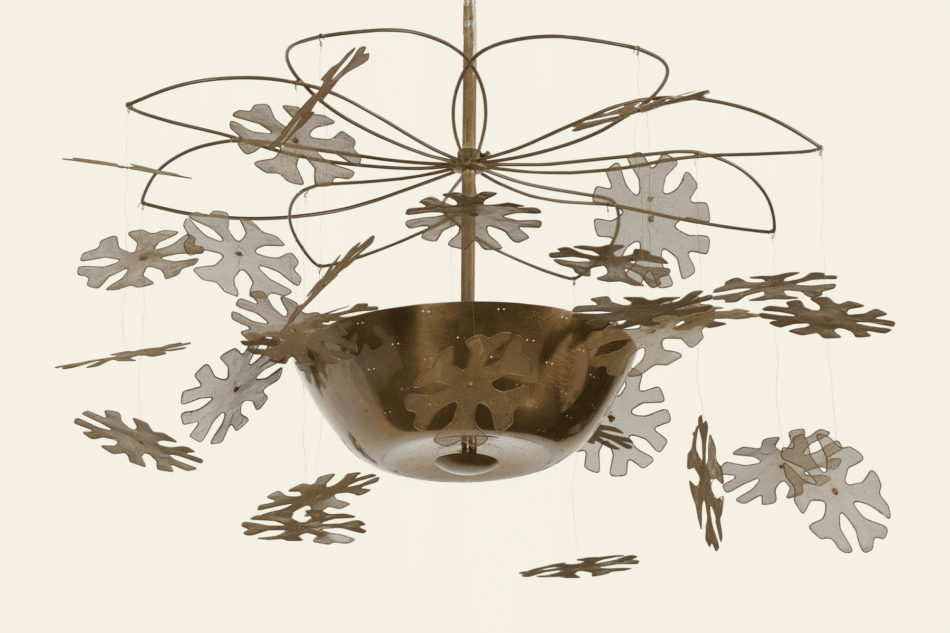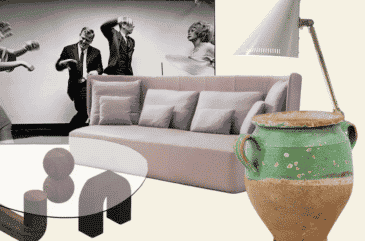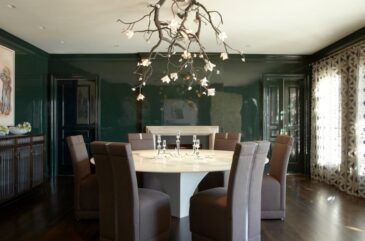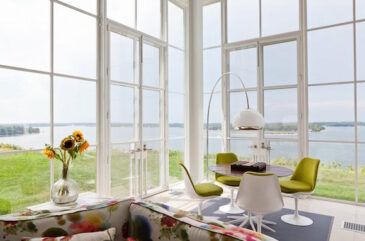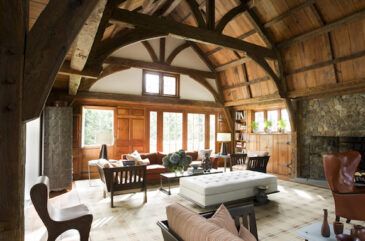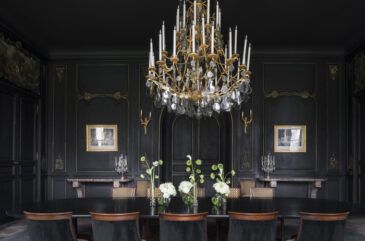Sometimes a particular object becomes thought of as a designer’s ne plus ultra, or ultimate achievement — or at least, as the work most coveted by collectors at that moment. Right now, for the outstanding 20th-century Finnish lighting designer Paavo Tynell (1890–1973), that object is the Snowflake chandelier, a sculptural, kinetic showstopper created in the immediate postwar years. It works its magic by casting warm light through an intricately perforated brass bowl, illuminating delicate brass mesh “snowflakes” suspended on wires that seem to dance in space.
The Helsinki company that Tynell cofounded in 1918, Taito Oy, was known at the time for stylish but utilitarian fixtures, used in countless homes as well as high-profile locations like the United Nations secretary general’s office, in New York, and Alvar Aalto’s Paimio Sanatorium and Viipuri Library, in Finland. But with the Snowflake, Tynell let his playful, creative side loose.
When the Snowflake was launched, in the late 1940s, “it was a little too design-forward for most,” says Phillip Morici, owner and cofounder of Fleurdetroit, a multidisciplinary design company, floral studio and retail shop in Bloomfield Hills, Michigan, who is offering an early example on 1stDibs. Many of the pendant lights and sconces in Taito Oy’s catalogue, Morici explains, were “Machine Age, shiny and sleek, but the Snowflake line was whimsical, with fantastic shadow play.”
Morici purchased the circa 1950 piece, a 31-inch-wide, 18-snowflake Model No. 9065, from the heirs of a physician-psychologist couple who bought it during that era. “Detroit was a mecca for design in that period,” he notes. It was the influential heyday of nearby Cranbrook Academy, where Eero Saarinen, Charles and Ray Eames, Harry Bertoia, Florence Knoll and other luminaries of mid-century modernism incubated many of their early designs.
The fixture had been hanging in the family’s dining room, part of what Morici calls “an original time capsule, with early Knoll pieces, Scandinavian design, flatware, dishes — everything untouched since the early ‘50s.” The dealer went on to broker private sales of most of the house’s contents. But the Snowflake he kept.
It can still happen, apparently, that an intact storehouse of pedigreed modernist design goes unnoticed in the heartland. The couple’s children just shrugged. “They said, ‘Mom and Dad never redecorated,’ ” Morici recalls. “They had no idea.”
